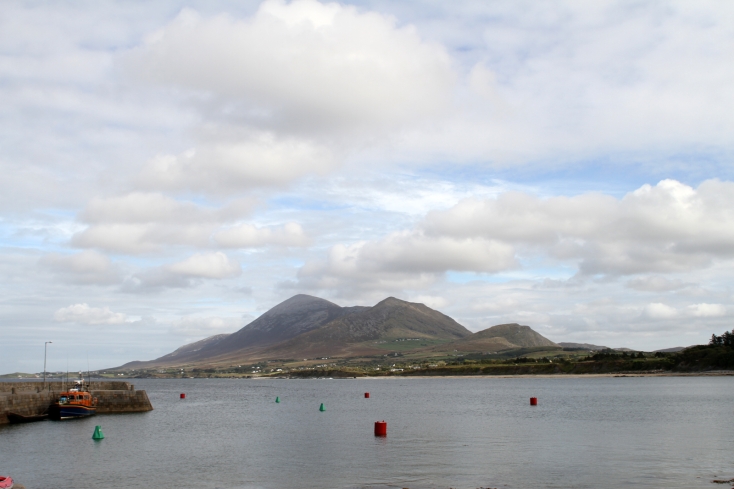
The real voyage of discovery consists not in seeking new landscapes, but in having new eyes.
Marcel Proust
If you’ve seen "Roman Holiday" you'll know that in the wall of a church in Rome is an ancient marble mask whose concave mouth, the Mouth of Truth, eats the hand of liars who dare to put them into the opening. What you might not know, is that the square in which the Mouth of Truth is located, and from which it takes its name, has another interesting feature: it is the place in which, the greatest number of examples of architecture from all different periods can be seen together, all in perfect harmony with each other: from the Temple of Hercules, dating back to 120 BC to the late medieval church of Santa Maria in Cosmedin and home to the Mouth of Truth; to the fountain of the Tritons, dating back to 1715; up to the various buildings from the Fascist era.

You would think that such a combination of historical legacies would be unique but that’s not the case. All over the world there are precious treasures that require those who visit them to alter their perception, transforming a simple journey into a revelation. County Mayo is one of them. The first step towards this epiphany is taken in the realization that in Western Ireland, two types of historical legacies coexist: on the one hand there is the architectural heritage, in constant dialogue with the natural one, as they blend together, undistinguishable; on the other the "narrative history", the men and women who have contributed to the country’s past, stamping their spirit on it, something that the people of Mayo guard closely in their hearts and in the stories they tell, concrete testimonies like the stone blocks that form the abbey.

The history of Mayo is as ancient as the world; Mother Nature concealed her origins until we were ready to appreciate it. Ceide Fields is in the north of the county and was only brought to light in the 30s having being covered for centuries by a soft layer of peat that was hiding the largest Neolithic settlement in the world. A settlement that tells the story of how ancient shepherds built their houses from wood, of how they domesticated animals, produced pottery and stone tools and were buried in megalithic tombs. A handful of these and of "stone circle" rituals still radiate their energy in the areas around Ceide Fields, as well as Kilcommon, Achill and Killala. Just a few kilometers from Killala, the subsequent Iron Age left traces through the Ogham Stones, tall upright stones on which are inscribed the first words written in the so-called Ogham alphabet and used to mark territorial boundaries or as commemorative stones. It was the period that saw the arrival of the Celts and the introduction of Gaelic to the valleys of the county.
It was in the fourth century AD that the narrative history of County Mayo commenced, with the gradual introduction of Christianity and the arrival of St. Patrick.

They say that almost every inhabitant was able to accurately recall the tale of how he spent forty days and forty nights praying for Ireland at Croagh Patrick, the mountain symbol of his worship, still today a pilgrim destination. Christianity takes root in the spirit of men and manifests itself in the green and blue folds of the territory: appearing in time in the abbeys, meeting places between man and nature where beauty resonates beauty, in a continuous reflection that not even the Reformation could erase, as in the cases of Ballintubber, Burrishoole or the more recent and beautiful Rosserk. The century of the Reformation was also the century of Grace O'Malley, another shining monument of the people of Mayo, the pirate queen, who was able to hold her own not only with Elizabeth I but all the English in a legendary battle off the coast of Clare Island, still home today to her spartan castle.

On the one hand the British: Protestants and settlers, on the other the Irish: Catholics and farmers. Every rebellion in Mayo is rooted in two main themes: religion and land ownership. The fiercely proud county still today shows traces of the centuries-old struggle undertaken on the road to freedom. A fight that began with the pirate Grace O'Malley, whose bronze statue today overlooks Westport House, and continued with the help of the French General Humbert. His "Old French Road" celebrates the route from Killala to Castlebar, reaching its completion with Michael Davitt, who freed the Irish peasants from the Aegis of the English landlords and returned their land to them a few years after the "Great Famine" of 1845 (recently commemorated with a monument which sits at the foot of Croagh Patrick).

From the Neolithic remains, the abbeys and the famine, to the great protagonists - symbols of freedom such as Michael Davitt, the territory of Mayo and its inhabitants uphold themselves in every moment of their journey, in a total perspective that goes beyond the classic "sequence of events" of history and they imbue, without distinction, people, landmarks and episodes of the past and present.